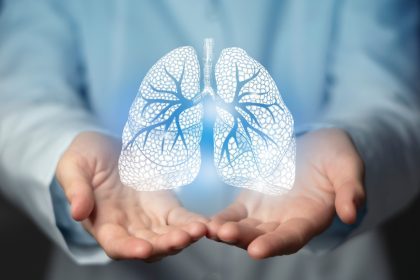Breathing difficulties and persistent mucus buildup can significantly impact daily life, making simple activities feel exhausting and uncomfortable. When airways become congested with thick secretions, the body struggles to deliver adequate oxygen to vital organs, leading to fatigue, reduced concentration, and overall decreased quality of life that affects work, sleep, and physical activities.
The accumulation of mucus in the respiratory system often results from various factors including environmental irritants, seasonal changes, dietary choices, and lifestyle habits. Understanding how to naturally clear these obstructions can provide immediate relief while supporting long-term respiratory health through safe, effective methods that work with the body’s natural healing mechanisms.
Natural lung clearing techniques offer gentle yet powerful alternatives to pharmaceutical interventions, providing relief without the side effects often associated with conventional treatments. These methods focus on loosening mucus, reducing inflammation, and supporting the body’s natural ability to clear respiratory passages while strengthening overall lung function.
1. Steam therapy provides immediate respiratory relief
Steam inhalation represents one of the most effective immediate treatments for loosening stubborn mucus and opening restricted airways. The warm, moist air helps thin thick secretions while reducing inflammation in respiratory passages, making it easier for the body to expel accumulated mucus naturally.
Creating an effective steam treatment involves filling a large bowl with hot water and positioning your face about 12 inches above the surface. Covering your head with a towel creates a steam tent that concentrates the warm moisture around your airways, maximizing the therapeutic benefits.
Adding natural ingredients to the steam water can enhance the treatment’s effectiveness. Eucalyptus oil contains compounds that act as natural decongestants, while peppermint oil provides cooling menthol that helps open airways. Salt water creates a saline solution that mimics the body’s natural fluids, helping to thin mucus more effectively.
The optimal duration for steam therapy ranges from 10 to 15 minutes, allowing sufficient time for the warm moisture to penetrate deep into respiratory passages. Regular treatments throughout the day can provide sustained relief, particularly when dealing with persistent congestion or seasonal respiratory challenges.
2. Hydration strategies target mucus consistency
Proper hydration plays a crucial role in maintaining healthy mucus consistency, preventing the thick, sticky secretions that can obstruct airways and cause breathing difficulties. When the body lacks adequate fluids, mucus becomes concentrated and difficult to expel, leading to persistent congestion and discomfort.
Water consumption should increase significantly when dealing with respiratory congestion, with warm liquids providing additional benefits beyond simple hydration. Hot water with lemon helps thin mucus while providing vitamin C and natural acids that support immune function and respiratory health.
Herbal teas offer targeted benefits for respiratory health, with specific herbs providing natural compounds that support lung function. Ginger tea contains anti-inflammatory properties that reduce swelling in airways, while licorice root tea has natural expectorant qualities that help loosen and expel mucus.
Avoiding dehydrating beverages becomes essential when fighting respiratory congestion. Alcohol, caffeine, and sugary drinks can worsen dehydration and thicken mucus, making breathing difficulties more severe and prolonging recovery time.
3. Breathing exercises strengthen respiratory function
Controlled breathing techniques help expand lung capacity while promoting the natural movement of mucus through respiratory passages. These exercises strengthen the diaphragm and intercostal muscles, improving the body’s ability to clear airways and maintain healthy respiratory function.
Deep breathing exercises involve inhaling slowly through the nose for four counts, holding the breath for four counts, and exhaling through the mouth for six counts. This pattern helps expand the lungs fully while creating pressure changes that assist in mucus movement and expulsion.
Pursed lip breathing provides another effective technique for managing respiratory congestion. This method involves inhaling through the nose and exhaling slowly through pursed lips, creating back pressure that helps keep airways open and prevents collapse during exhalation.
Diaphragmatic breathing focuses on using the diaphragm muscle rather than chest muscles for breathing. This technique involves placing one hand on the chest and one on the abdomen, ensuring that the abdominal hand moves more than the chest hand during breathing, promoting deeper, more efficient respiration.
4. Dietary modifications support lung health
Certain foods naturally thin mucus and reduce inflammation in respiratory passages, while others can increase mucus production and worsen breathing difficulties. Understanding which foods support respiratory health can significantly improve breathing comfort and reduce congestion.
Spicy foods containing capsaicin, the compound that makes peppers hot, act as natural decongestants by thinning mucus and promoting its expulsion. Garlic and onions contain sulfur compounds that have natural antimicrobial properties while helping to break down mucus barriers.
Citrus fruits provide vitamin C and natural acids that support immune function and help thin respiratory secretions. Pineapple contains bromelain, an enzyme that has natural anti-inflammatory properties and can help reduce swelling in airways.
Avoiding mucus-promoting foods becomes equally important for respiratory health. Dairy products, particularly milk and cheese, can increase mucus production in some individuals, while processed foods high in sugar and artificial additives can promote inflammation and worsen breathing difficulties.
5. Physical positioning aids natural drainage
Proper body positioning can facilitate the natural drainage of mucus from respiratory passages, using gravity and anatomical positioning to help clear airways. These techniques work particularly well when combined with other natural clearing methods.
Postural drainage involves positioning the body so that gravity helps move mucus from different areas of the lungs toward the throat, where it can be coughed up and expelled. Different positions target different areas of the lungs, providing comprehensive drainage of accumulated secretions.
Sleeping with an elevated head position helps prevent mucus from pooling in the throat and airways during rest. Using extra pillows or a wedge pillow maintains proper drainage throughout the night, reducing morning congestion and improving sleep quality.
Gentle percussion on the chest and back can help loosen mucus through controlled vibrations. This technique involves cupping the hands and gently tapping on the chest and back areas, creating vibrations that help dislodge sticky secretions from airway walls.
6. Environmental modifications reduce irritation
Creating a respiratory-friendly environment reduces exposure to irritants that can worsen breathing difficulties and increase mucus production. Simple environmental changes can provide significant relief while supporting the body’s natural healing processes.
Humidity levels between 40-50% provide optimal conditions for respiratory health, preventing airways from becoming too dry while avoiding excess moisture that can promote mold growth. Using a humidifier during dry seasons or in heated indoor spaces helps maintain proper moisture levels.
Air purification removes environmental irritants that can trigger respiratory symptoms and increase mucus production. HEPA filters effectively capture particles, allergens, and pollutants that can worsen breathing difficulties, while plants like spider plants and peace lilies naturally purify indoor air.
Avoiding respiratory irritants becomes crucial for maintaining clear airways. Cigarette smoke, strong perfumes, cleaning chemicals, and air fresheners can all trigger increased mucus production and worsen breathing difficulties, making natural clearing methods less effective.
7. Gentle physical activity promotes circulation
Light physical activity helps improve circulation and lymphatic drainage, supporting the body’s natural ability to clear respiratory passages. Exercise also helps strengthen respiratory muscles and improve overall lung function when performed appropriately.
Walking represents an ideal form of gentle exercise that promotes respiratory health without overexertion. The rhythmic movement helps stimulate circulation while encouraging deeper breathing patterns that naturally help clear airways.
Yoga poses specifically designed for respiratory health can provide targeted benefits for lung clearing. Cat-cow stretches help open the chest cavity, while gentle twists promote circulation and help move mucus through respiratory passages.
Avoiding strenuous exercise during acute respiratory congestion prevents overexertion that can worsen breathing difficulties. Gentle movement maintains circulation benefits while allowing the body to focus energy on healing and recovery.
Implementation and timing considerations
Combining multiple natural clearing methods often provides superior results compared to using single techniques alone. The synergistic effects of steam therapy, proper hydration, breathing exercises, and dietary modifications create comprehensive support for respiratory health.
Timing these interventions appropriately maximizes their effectiveness. Morning steam therapy helps clear overnight mucus accumulation, while evening treatments can prevent nighttime congestion and improve sleep quality.
Consistency in applying these natural methods proves more effective than sporadic intensive treatments. Regular daily practice of breathing exercises, maintaining proper hydration, and avoiding respiratory irritants provides sustained benefits for long-term respiratory health.
Monitoring progress helps determine which methods work best for individual needs and conditions. Keeping track of breathing comfort, mucus consistency, and overall respiratory function helps identify the most effective combination of natural clearing techniques.

















